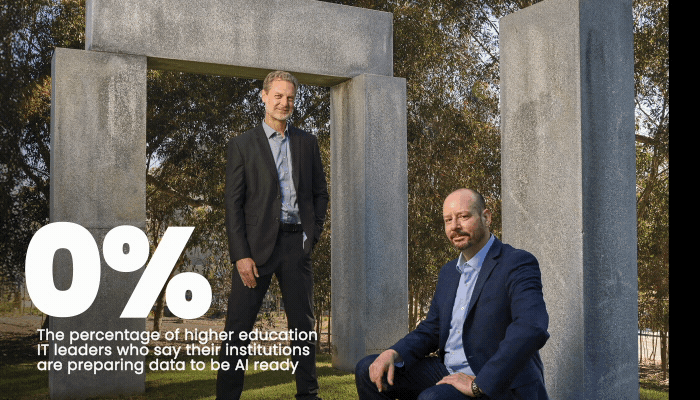How to Make Data AI-Ready
AI applications require good data to be effective. Consequently, universities and colleges are fine-tuning their data governance strategies and technologies to support their AI initiatives.
Data governance starts with developing policies driven by four principles: data quality, security and privacy, regulatory responsibilities and ethics, says Forrester Principal Analyst Michele Goetz.
Universities must then use processes and technology to implement those policies and create the appropriate AI guardrails to manage risk and produce good, accurate and relevant results, she says.
“It’s creating a consistent data governance plan and stewardship model and investing in technology to help you do this,” Goetz says.
Higher education can deploy cloud-based data governance tools from Amazon Web Services, Google Cloud or Microsoft Azure. They can also implement more comprehensive governance software from vendors that are increasingly adding features for AI use cases, she says.
These tools enable institutions to curate data and create data catalogs so users can search for available information. They also allow universities to document and enforce policies, manage user access and track the lineage or flow of data to ensure security, privacy and compliance.
Today, many universities have cobbled together homegrown solutions, but some campuses have begun using generative AI to govern their data, Goetz says.
SURVEY SAYS: The pace of AI evolution demands a sense of urgency.
UC San Diego Adapts Data Governance for AI
UC San Diego developed a data governance framework about eight years ago when IT leaders built a data analytics platform using Tableau and IBM Cognos reporting tools and an SAP HANA data warehouse on AWS, which allows staff to run reports and get insights on institutional data.
A data analytics governance committee (including an interdisciplinary team of data stewards who curate the data) collaborates with the campus privacy office and IT security team to create and fine-tune data governance policies, says Daniel Suchy, senior director of Academic Technology Services at UC San Diego.
TritonGPT is hosted securely on-premises at the university’s San Diego Supercomputer Center, giving IT department complete control over the data used. When the university rolled out the AI assistants in 2024, the IT team leveraged a mix of existing and new technology to govern data.
For example, the AI assistant that will allow employees to use natural language to query the analytics platform is in the proof-of-concept stage. It uses the same security and data governance workflow that currently gives employees access to the data warehouse, Pollak says.
Through ServiceNow software, employees can request data access, and through an electronic workflow, their requests are approved by managers and data stewards. Once requests are approved, the IT staff uses Active Directory to provide access, he says.













